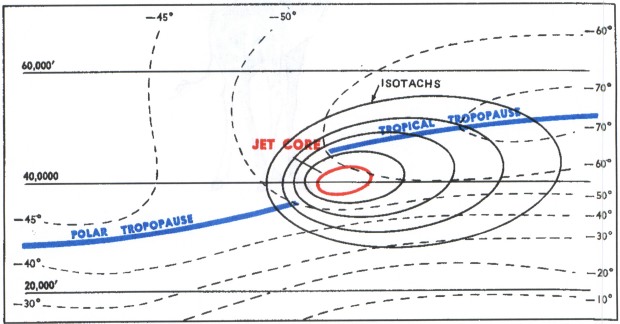Aviation Weather
full text of the classic FAA guide
THE TROPOPAUSE
Why is the high altitude pilot interested in the tropopause? Temperature and wind vary greatly in the vicinity of the tropopause affecting efficiency, comfort, and safety of flight. Maximum winds generally occur at levels near the tropopause. These strong winds create narrow zones of wind shear which often generate hazardous turbulence. Preflight knowledge of temperature, wind, and wind shear is important to flight planning.
In chapter 1, we learned that the tropopause is a thin layer forming the boundary between the troposphere and stratosphere. Height of the tropopause varies from about 65,000 feet over the Equator to 20,000 feet or lower over the poles. The tropopause is not continuous but generally descends step-wise from the Equator to the poles. These steps occur as “breaks.” Figure 123 is a cross section of the troposphere and lower stratosphere showing the tropopause and associated features. Note the break between the tropical and the polar tropopauses.

An abrupt change in temperature lapse rate characterizes the tropopause. Note in figure 123 how temperature above the tropical tropopause increases with height and how over the polar tropopause, temperature remains almost constant with height.
Table of Contents
Previous Section: High Altitude Weather
Next Section: The Jet Stream
A PDF version of this book is available here. You may be able to buy a printed copy of the book from amazon.com.
